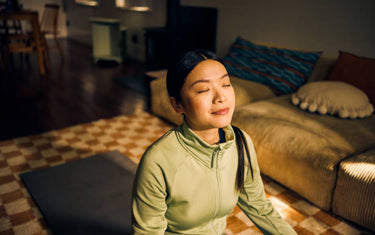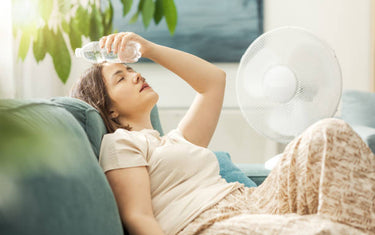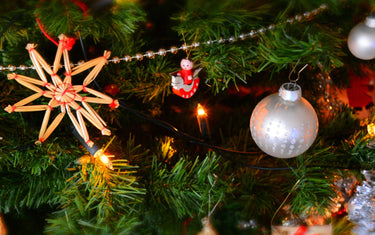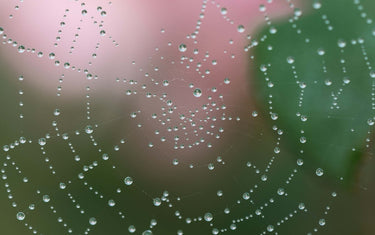4 min read / 13 August 2024 / yasmin sharp
How to Use Essential Oil Roll-Ons for Skin Care
Discover the benefits of essential oil roll-ons for skin care, and learn how to easily incorporate them into your natural beauty routine.
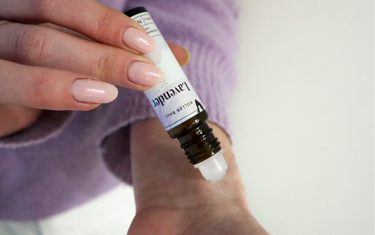
Can you use essential oil roll-ons on your skin?
What are the best skin care essential oils for roll-ons?
How to make essential oil roll-ons
How to use essential oil roll-ons
Essential oils are not only good for your mental wellbeing but can also help to improve the condition of your skin.
And using essential oil roll-ons as part of a natural skincare routine can make all the difference, especially if you have dry, oily or sensitive conditions.
We explain why these fantastic little helpers are the perfect little addition to any DIY skin care regime and offer some recommendations on which oils to get started with.
Can you use essential oil roll-ons on your skin?Essential oil roller balls are intended for use on skin, as they are designed for easy application on your pulse points. Adding them to your homemade skincare routine is simple. You can slip the bottles into your pocket or purse and use them no matter where you are. They work in the same way as all other skin care essential oils – as long as they are properly diluted with a carrier oil and patch tested before widespread application, your skin can benefit from the natural compounds and properties. |

What are the best skin care essential oils for roll-ons?
Here are five essential oils good for skin:
1. Lavender oil helps to revitalise dry skin
If you tend to have dry skin, including lavender essential oil as part of your personalised skincare routine could provide the answer.
Not only does it contain anti-inflammatory properties, but it also contains antioxidant compounds, so it can reduce redness and stimulate collagen production. [1]
2. Regain control over oily skin with clary sage
Clary sage essential oil contains compounds geranyl and linalyl acetate, which both play an active role in controlling the production of excess sebum. [2]
One study found that clary sage was able to combat bacteria responsible for skin infections that result in skin irritation or acne breakouts.
3. Combat the signs of ageing with rose oil
Vitamins A and C are well known for their antioxidant properties, which is why many people add rose essential oil into their own DIY skin care products. [3]
It blends particularly well with the likes of ylang ylang and sandalwood and can also be easily blended with your favourite skin care creams and lotions, helping to boost skin cell turnover to create a younger looking appearance.
4. Ylang ylang could restrict skin pigmentation
Whether it’s the appearance of age spots, acne scars or other unwanted blemishes, our skin is constantly battling to ward off unwanted irritants.
Ylang ylang oil is a widespread favourite when it comes to natural skincare, although perhaps one of its lesser-known benefits is its ability to prevent skin pigmentation. [4]

How to make essential oil roll-ons
To make essential oil roll-ons for natural skincare, you’ll need the following:
- 10ml Amber or cobalt roller bottle
- Essential oils of choice
- Carrier oil of choice
Steps on how to make essential oil roll-ons
1. Add essential oil to the bottle
A 10ml bottle requires 20-30 drops of essential oil to achieve a 2% dilution ratio. If you use a larger bottle, you can follow this calculation as a guideline.
This is the total amount of drops needed for the mixture, whether you are using a single oil or mixing together multiple oils.
2. Fill the rest of the bottle with a carrier oil
To give your skin protection during topical application, you will need to add a carrier oil to dilute the strength of the essential oil.
You can simply fill the bottle the rest of the way using the carrier oil.
3. Blend the oils together
Replace the lid on the bottle and gently shake the bottle to mix the oils together. This will ensure the carrier oil and essential oil(s) are evenly distributed before application.
How to use essential oil roll-ons
The beauty of roll-on essential oils is that you can use them pretty much anywhere you go.
They are also designed to be used on your pulse points, which means you can apply them to your:
- Temples
- Wrists
- Neck
- Jawline
Alternatively, if you want to treat a small blemish or minor wound, then quickly add the oil to your skin as and when you need.
To use essential oil roll-ons, follow the steps below:
- Remove the lid from your roll-on essential oil.
- Hold the bottle and gently glide the ball across the pulse point or chosen area of skin.
- You can either leave the oil to naturally absorb or rub it into your skin.
- Feel free to repeat this technique whenever you need.
As always, if you are using an essential oil for the first time, it is recommended that you complete a patch test to ensure it is suitable for your skin.
To do this, add a small amount of the diluted oil to the inside of your elbow and cover with a plaster for 24 hours. If you do not experience any redness, inflammation or itchiness, then it should be fine to continue using the oil.

Final thoughts
Homemade skincare treatments don’t have to be complicated - and essential oil roll-ons offer the perfect solution.
They are especially helpful if you live a fast-paced, busy lifestyle, allowing you to take care of your skin without interrupting the flow of your day.
Making them is easy too, as you only need a compact roller bottle, essential oil and carrier oil, and when you’re ready, apply to your pulse points or specific areas of skin and let the oils work their magic.
[1] Gabriela L da Silva et al. (2015) Antioxidant, analgesic and anti-inflammatory effects of lavender essential oil https://pubmed.ncbi.nlm.nih.gov/26247152/
[2] Babar Ali et al. (2015) Essential oils used in aromatherapy: A systemic review https://www.sciencedirect.com/science/article/pii/S2221169115001033?via%3Dihub
[3] Torsten Bohn et al. (2022) Is vitamin A an antioxidant? https://www.researchgate.net/publication/359289345_Is_vitamin_A_an_antioxidant
[4] Loh Teng Hern Tan et al. (2015) Traditional Uses, Phytochemistry, and Bioactivities of Cananga odorata (Ylang-Ylang) https://www.ncbi.nlm.nih.gov/pmc/articles/PMC4534619/


